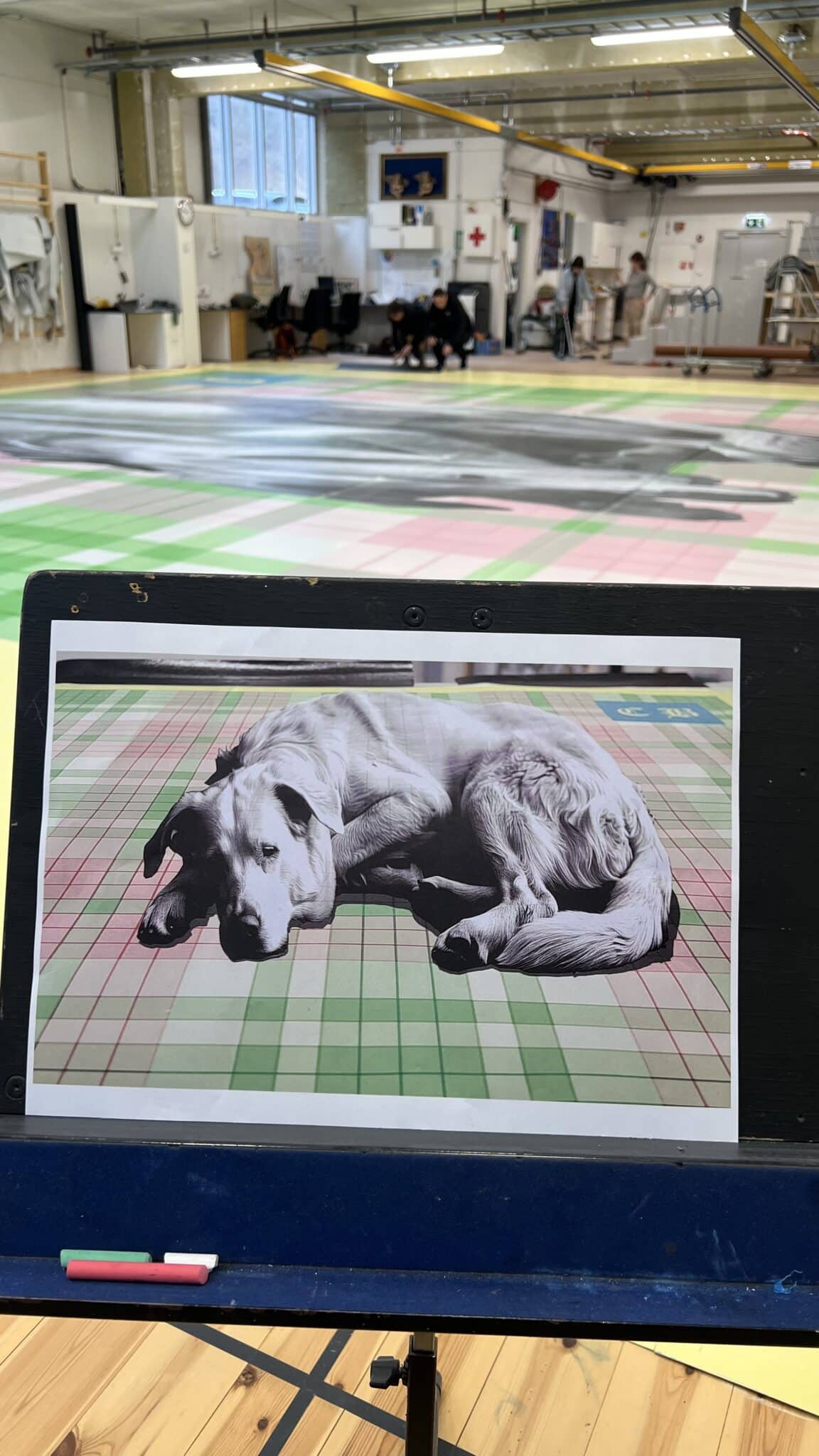
The printed sketch compared with the hand-painted floor. Photo: Jonas Sharif Hordvik.
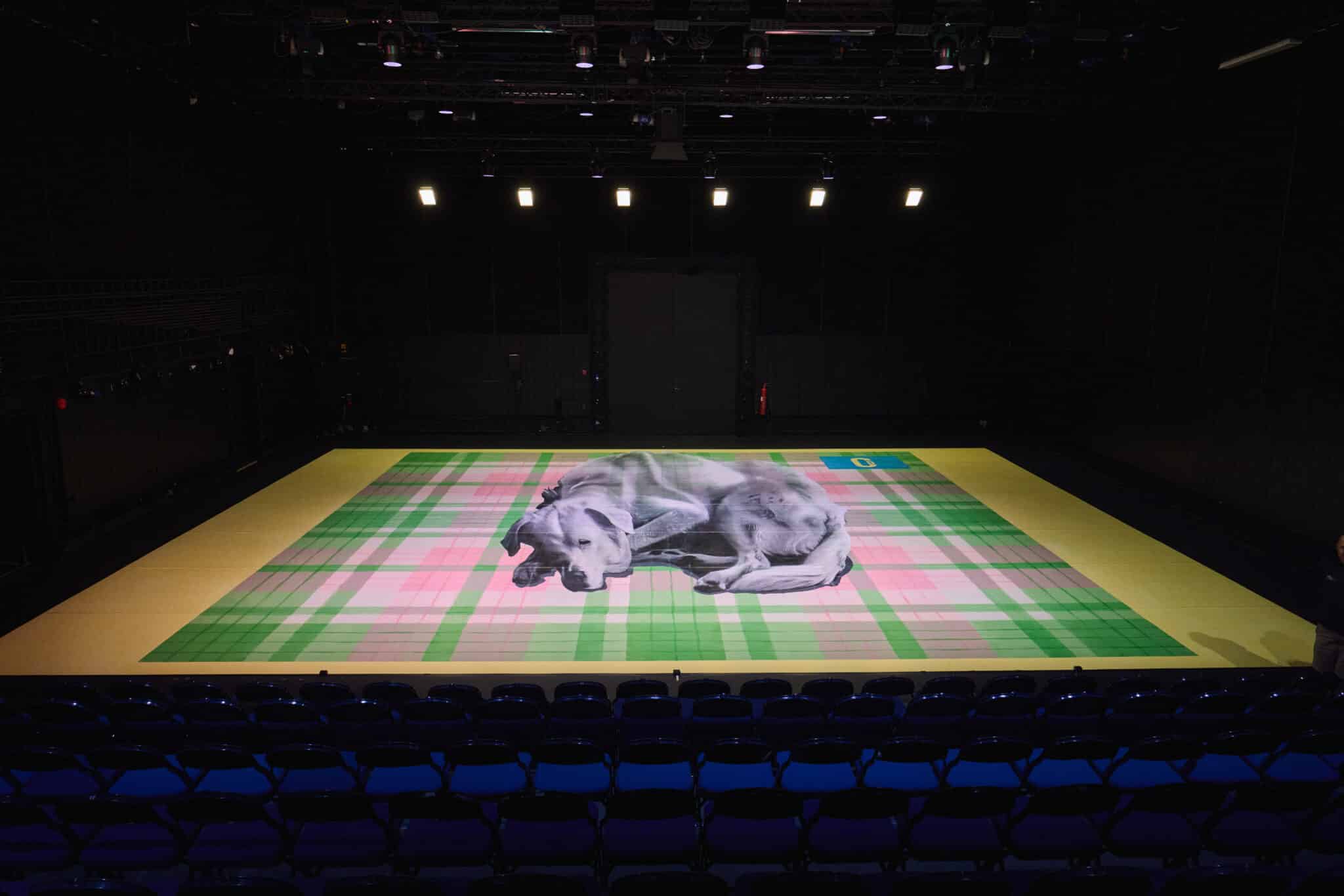
When the audience enters the performance space of CANCEL BERTHA, the painted floor is impossible to ignore: a tartan rug, a photorealistic dog stretched in perspective, an image that feels at once familiar and strange. But the floor is more than decoration. For the dancers, it also functions as a choreographic score – a surface to navigate and measure themselves against.
Scenographer Joris van Oosterwijk developed the idea from multiple sources: Jan Martens’ notebooks, his choreographic ideas, and the archetypes evoked in Sibylle Baier’s song “Tonight”. The execution was carried out by the scenic painters at Den Nationale Scene’s Malersal (the painting workshop of Norway’s oldest permanent theatre, based in Bergen), led by Maria Hjelmeland, Head of the Scenic Painting Department.
Here, Joris and Maria share the story of the floor – from early sketches and experiments to the fully hand-painted surface now touring with the company.

The printed sketch compared with the hand-painted floor. Photo: Jonas Sharif Hordvik.
Jan was inspired by seeing graphical scores in contemporary music. I explored that visual concept, but quickly came to the conclusion that the use of a score, of course, is to read the music – and how a certain visual composition comes about is a (logical) consequence of the music composed by the composer.
I then thought: what if this score is meant to read choreography instead of music? Like a choreographic score painted on a ballet floor, being the result of Jan drawing the score for Cancel Bertha. Also, for the dancers to read while performing.
So I asked him to draw out what was in his head. And of course, I know him well and have seen all the small crosses, numbers, lines, and patterns that are in his notebooks, exposed on his desk. What I see there is something I do not understand – it’s abstract to me. It’s mathematics, it has form, it’s graphic. They are the graphic scores of Jan Martens, and I find them pretty.
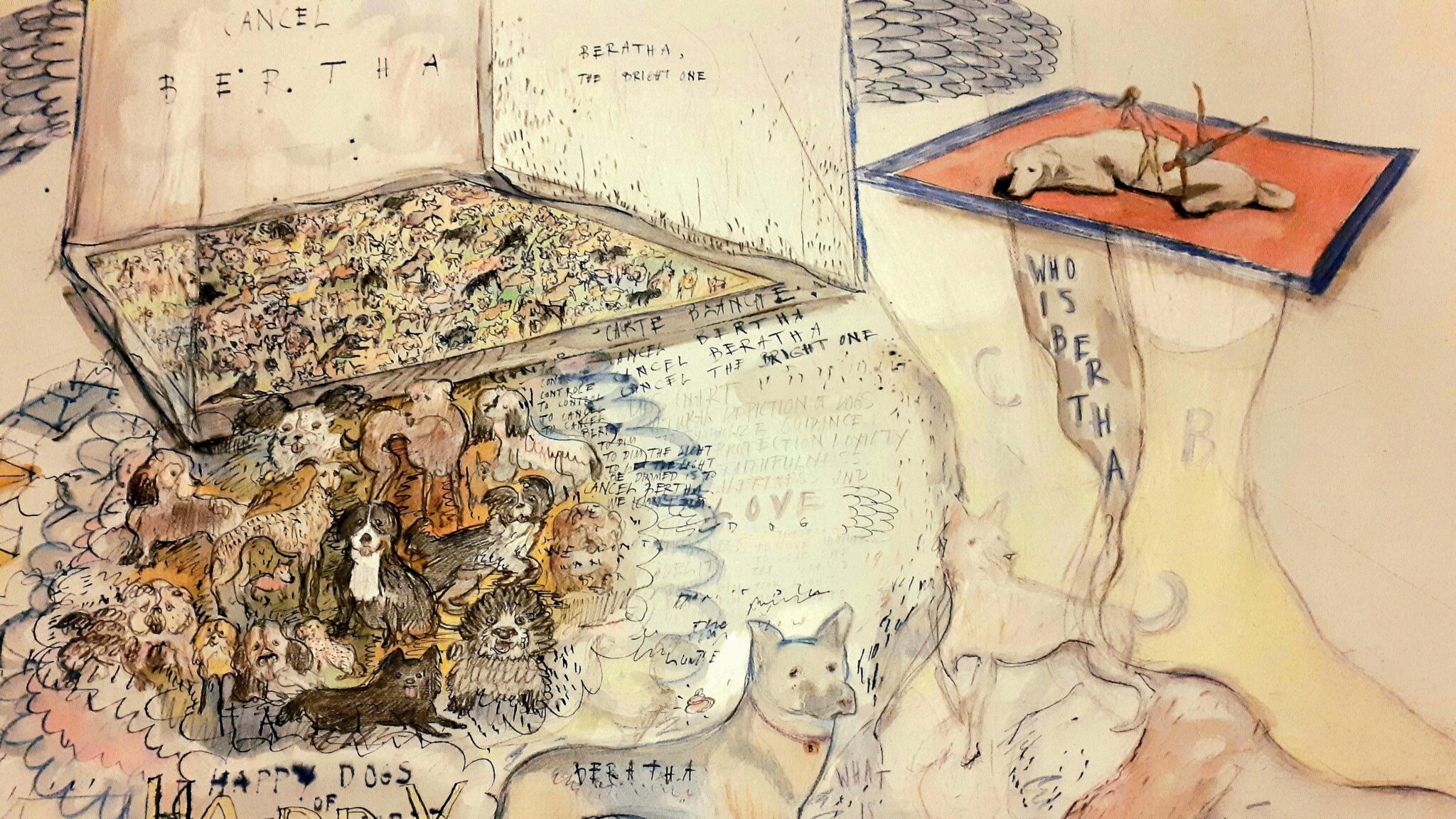
Early exploration by Joris van Oosterwijk combining archetypes, dogs, and graphic patterns. Photo/Sketch: Joris van Oosterwijk.
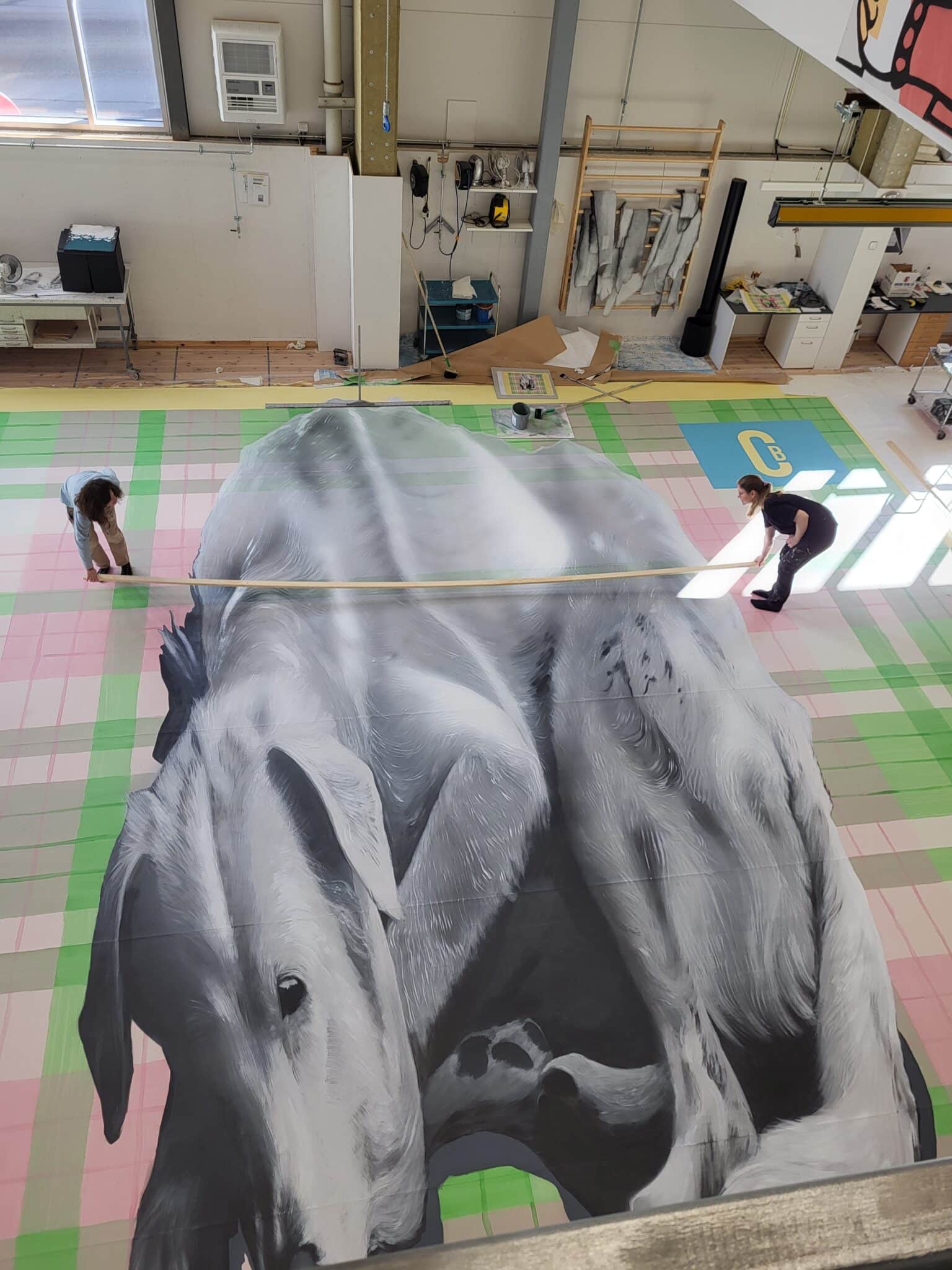
Scenic painters at DNS working together on the large dog figure for the CANCEL BERTHA floor. Photo: Sunniva Prytz Sandnes.
I also like to work with archetypes, like for example HOME, GARDEN, TREE, MOTHER. And when I listen to “Tonight” by Sibylle Baier, I really get a sense of different archetypes at work, so to speak. In the song, the moon plays an important role, and there is a cat. The song is also a bit homey. I like the comforting vibe. And so ‘cat’ became a dog. Because the dog was lying on the balcony, in our home. He is called Matteo.
So in CANCEL BERTHA, we have the archetype DOG lying on a tartan rug in collaboration with the archetype MOON.
About the meaning of the DOG, I don’t want to say too much – for archetypes come to you on a different level of understanding, which is more subconscious. Archetype DOG I find beautiful in its meaning. In art and sagas, dogs have played an important role for centuries.
I did a lot of dog sketching, but at some point I thought it would be best to go to Luis Xertu in Rotterdam.
He is a great visual artist based in Rotterdam, but also a wizard when it comes to image editing. For example, I knew he could do the stretching of the dog like no other – a very important aspect, since a floor is flat and therefore the dog had to be painted in perspective. We had a fun time digitally shaping and sculpting this dog I had in mind. A massive thanks to Luis!
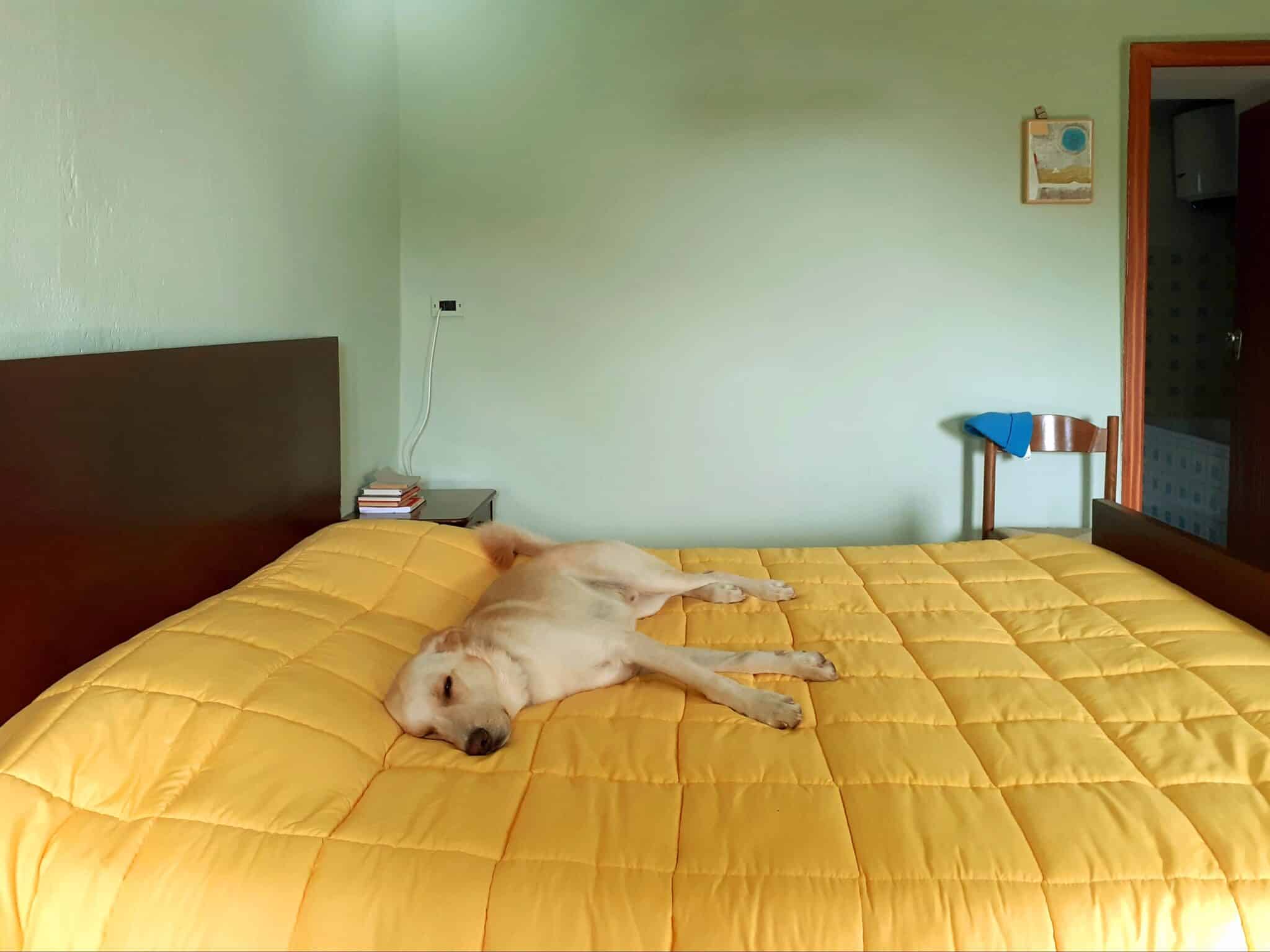
Matteo, the model for the painted floor’s dog. Photo: Joris van Oosterwijk.
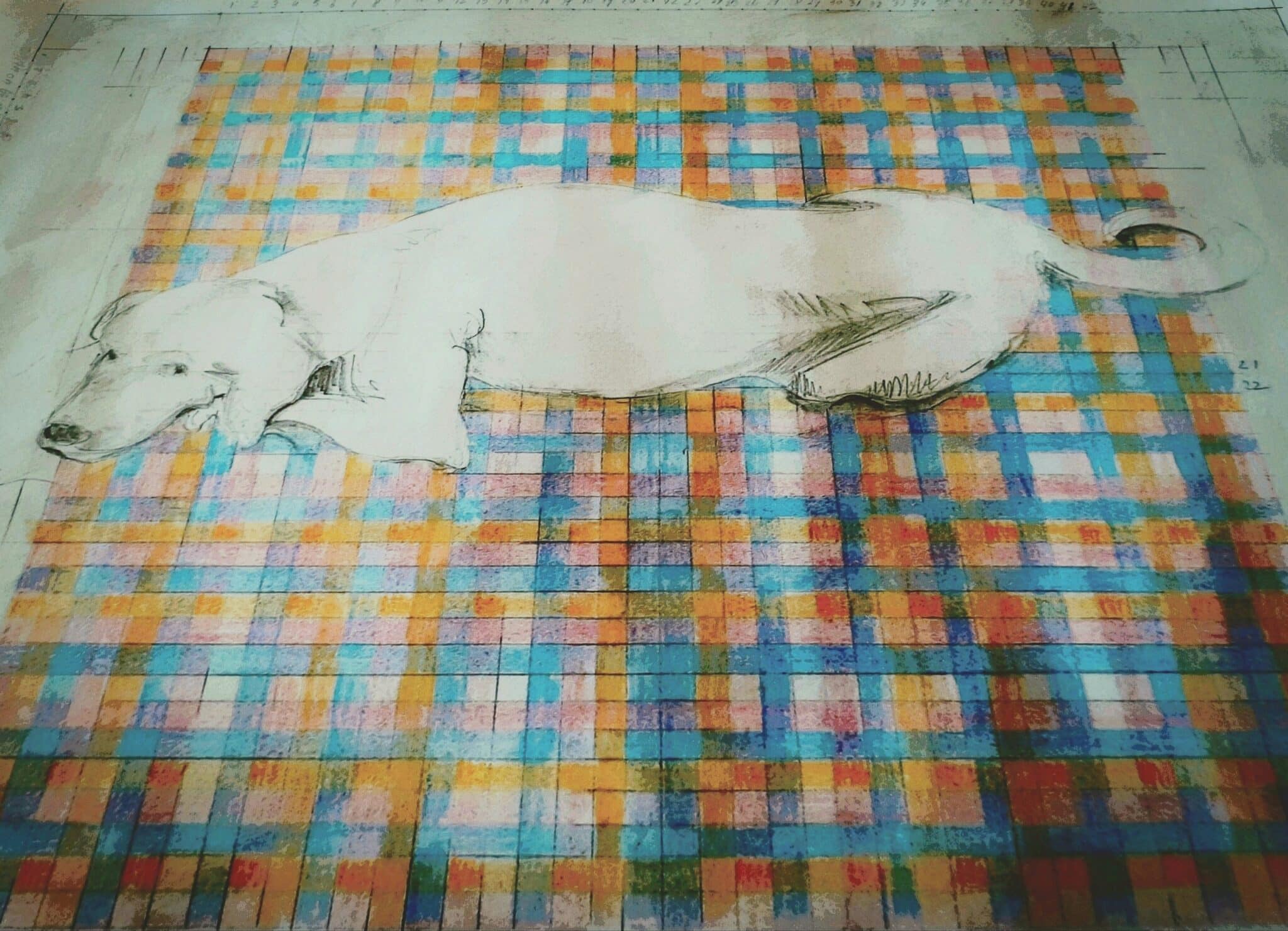
Development sketch for the CANCEL BERTHA painted floor. Sketch: Joris van Oosterwijk.
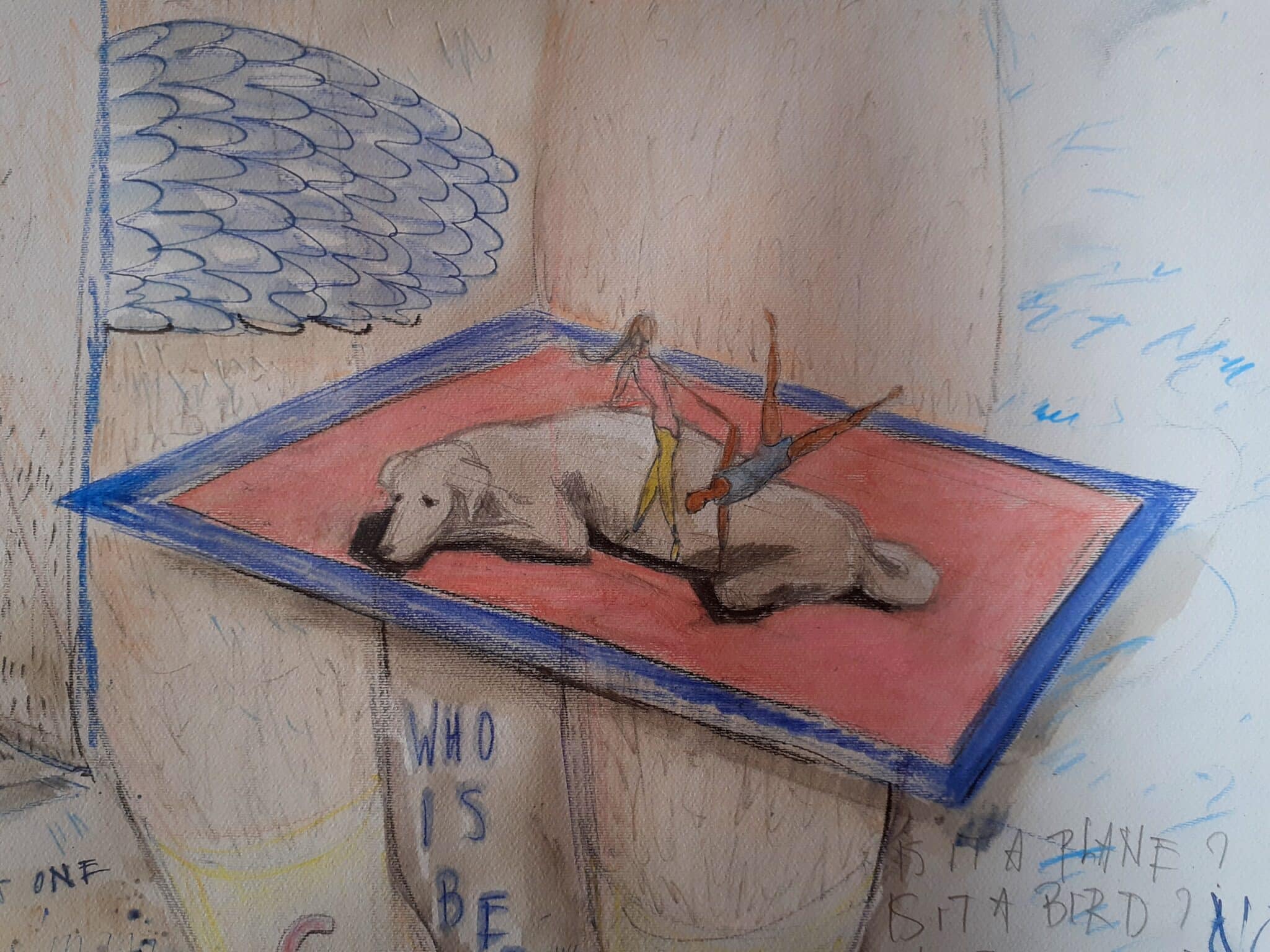
Sketch exploring dancers performing on the dog archetype. Sketch: Joris van Oosterwijk
What was your reaction when you were asked to paint the floor for CANCEL BERTHA? Did it feel like a typical project?
Both typical and atypical.
Typical in the sense that large-format painting – whether for floors, drops, or backdrops – is a foundational part of scenic painting. What was unusual for us was that this would be painted on a dance floor. We had to account for the dancers’ needs, and it had to endure an international tour.
How did the work begin? What materials or references did Joris provide, and how did you collaborate on bringing the idea to life on the dance mats?
Early in the process, the ideas Joris shared were technically and visually simpler, with the key concept being the visual ‘graphic score’ the dancers would use. But after many beautiful sketches and developments, the final design emerged: an anamorphic, photorealistic, AI-generated dog lying on a checkered carpet with the CB logo.
That made it far more complex and demanding. As usual, we asked for a scale drawing (1:25) showing exactly what it should become, and we ‘copied’ it. Joris wanted it to look hand-painted – with visible brushstrokes – but the dog also had to be as photorealistic as possible. We kept in close dialogue to ensure we were achieving his vision.
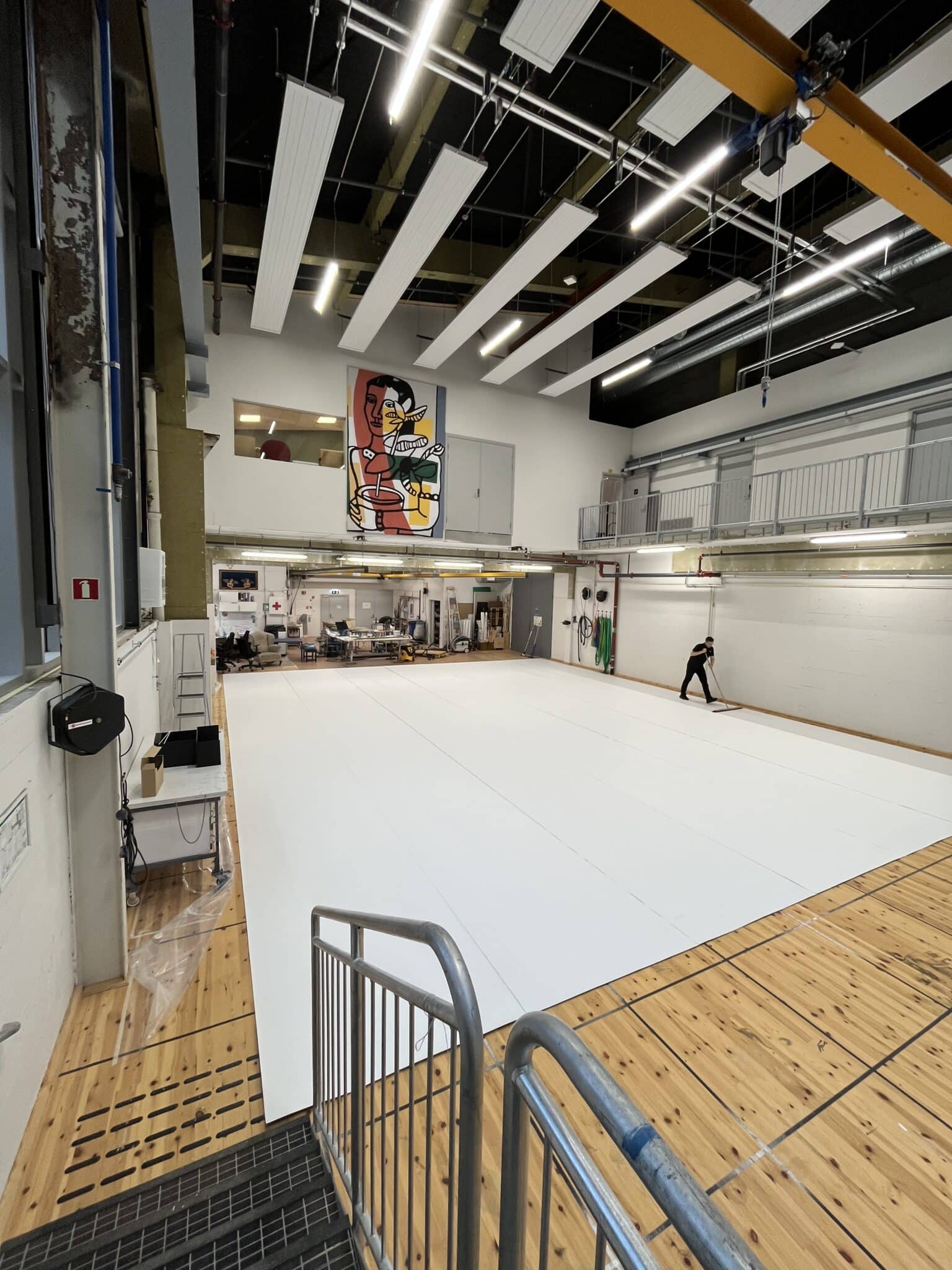
The floor surface laid out before painting begins at DNS Malersal. Photo: Evgeny Lysak
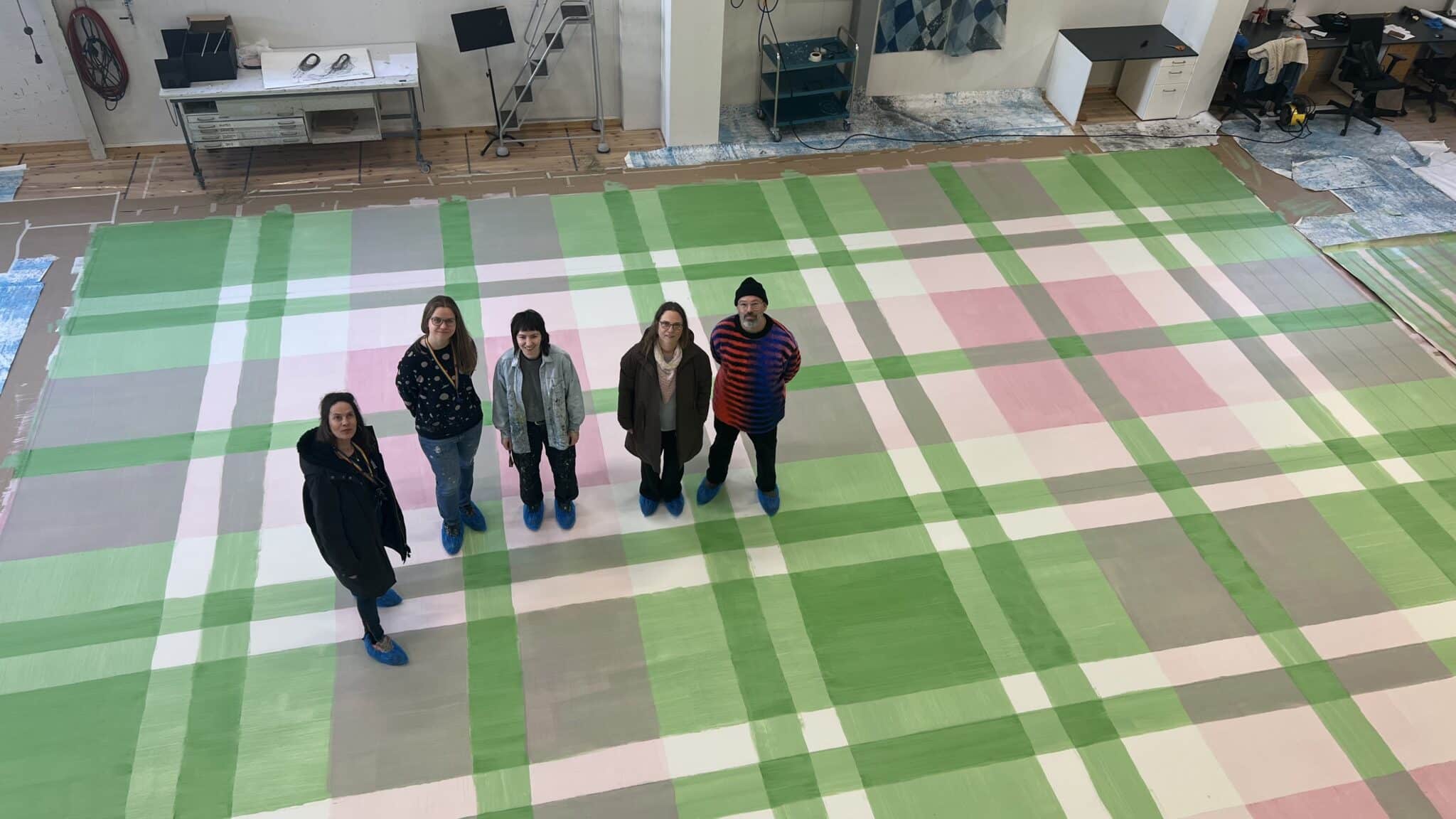
The painting team, Joris and Production and Planning Director Møyfrid at DNS Malersal standing on the finished tartan base. Photo: Jonas Sharif Hordvik.
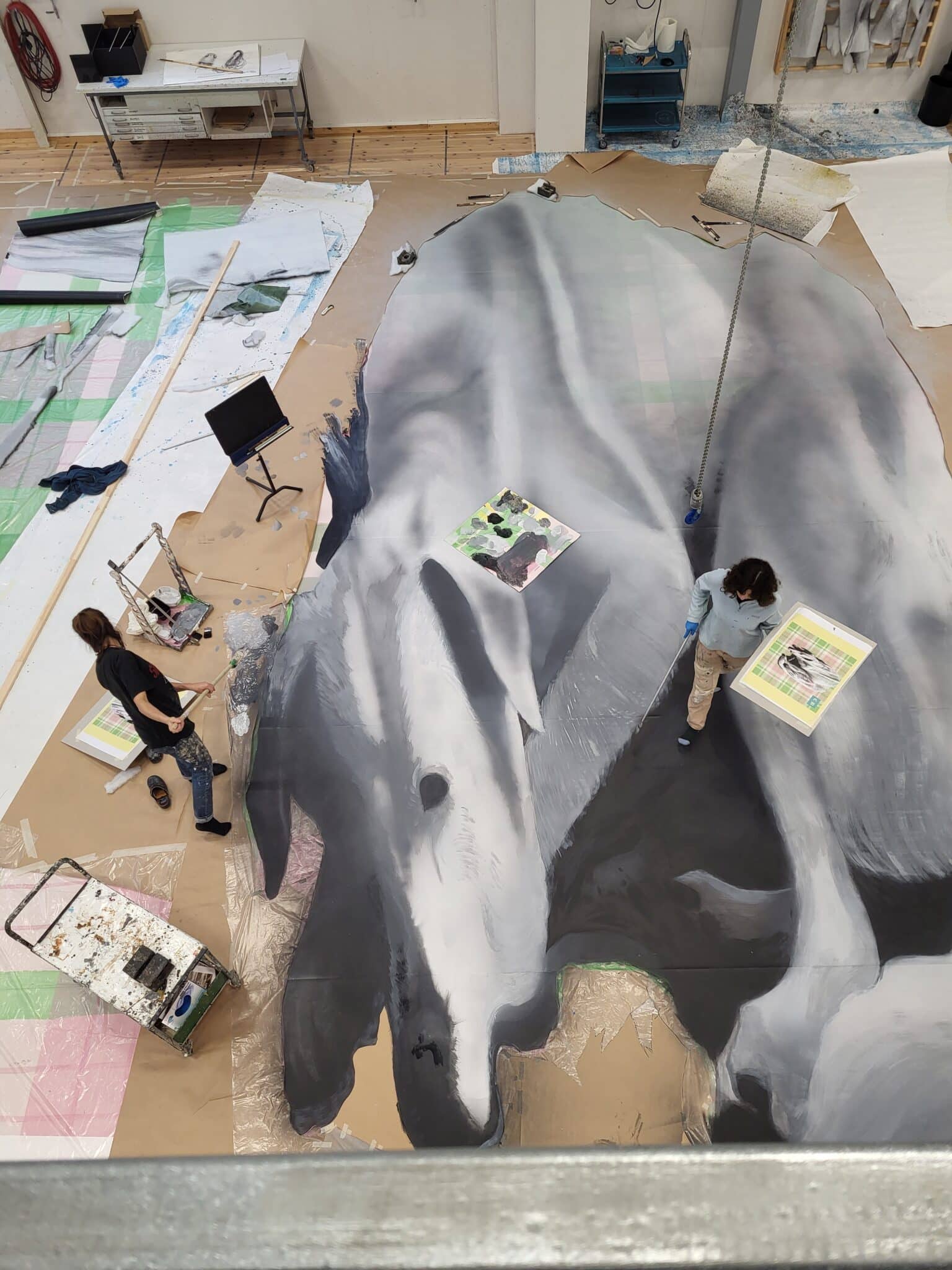
Collaboration in scale: bringing the dog motif to life across the dance floor. Photo: Sunniva Prytz Sandnes
How did it feel to see the floor as part of the finished performance? Did anything surprise you – in the lighting, or how the dancers used it?
It was amazing to first receive the grateful and positive response from Joris and Jan when we delivered the floor to Carte Blanche. But hearing later how much the dancers appreciated moving on it and working with it – that was the real reward.
It looked great with the lighting and choreography. It was also fantastic to see how they used the score built into the checkered pattern – something we fought hard to keep visible, even through the dog. (We cheated a bit by painting stripes over parts of the dog.)
Overall, we’re very proud of the collaboration and the result. And we now have increased expertise in painting dance mats – we suspect this could become a new scenographic trend. If so, we’re ready for the next challenge.
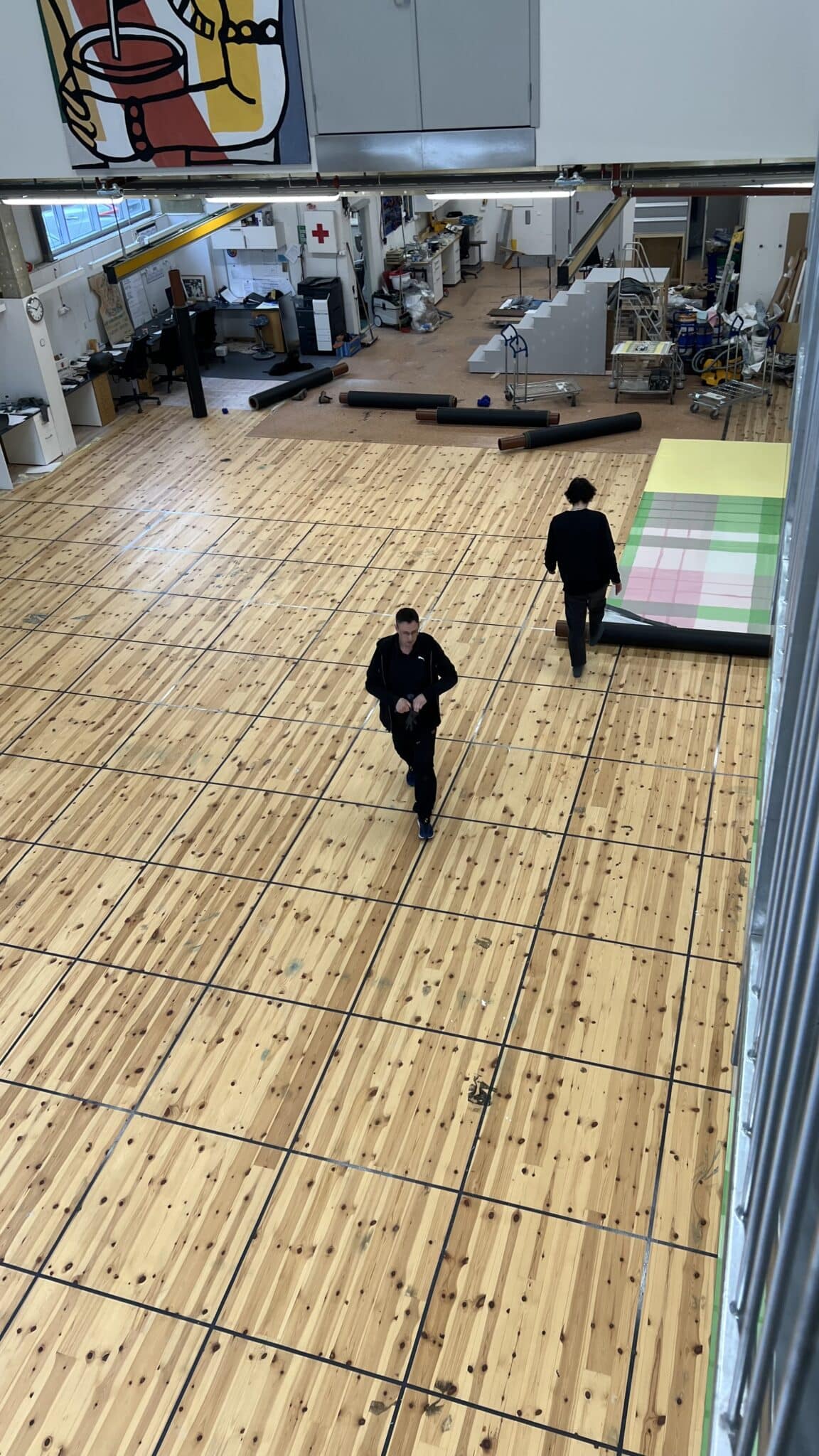
The painted floor being rolled up and prepared for transport. Photo: Jonas Sharif Hordvik.
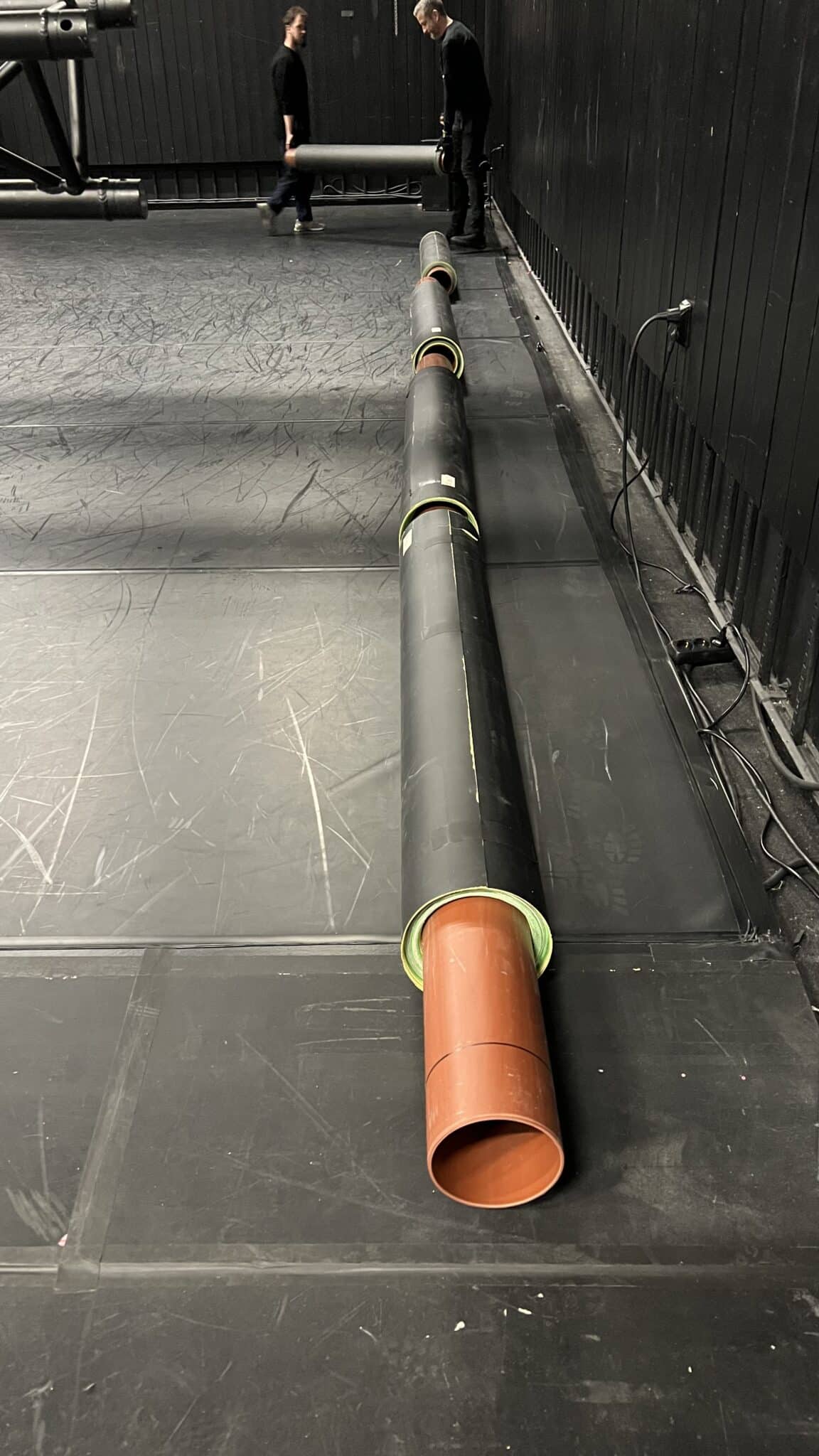
The painted floor rolls staged in Studio Bergen before being laid out. Photo: Jonas Sharif Hordvik.
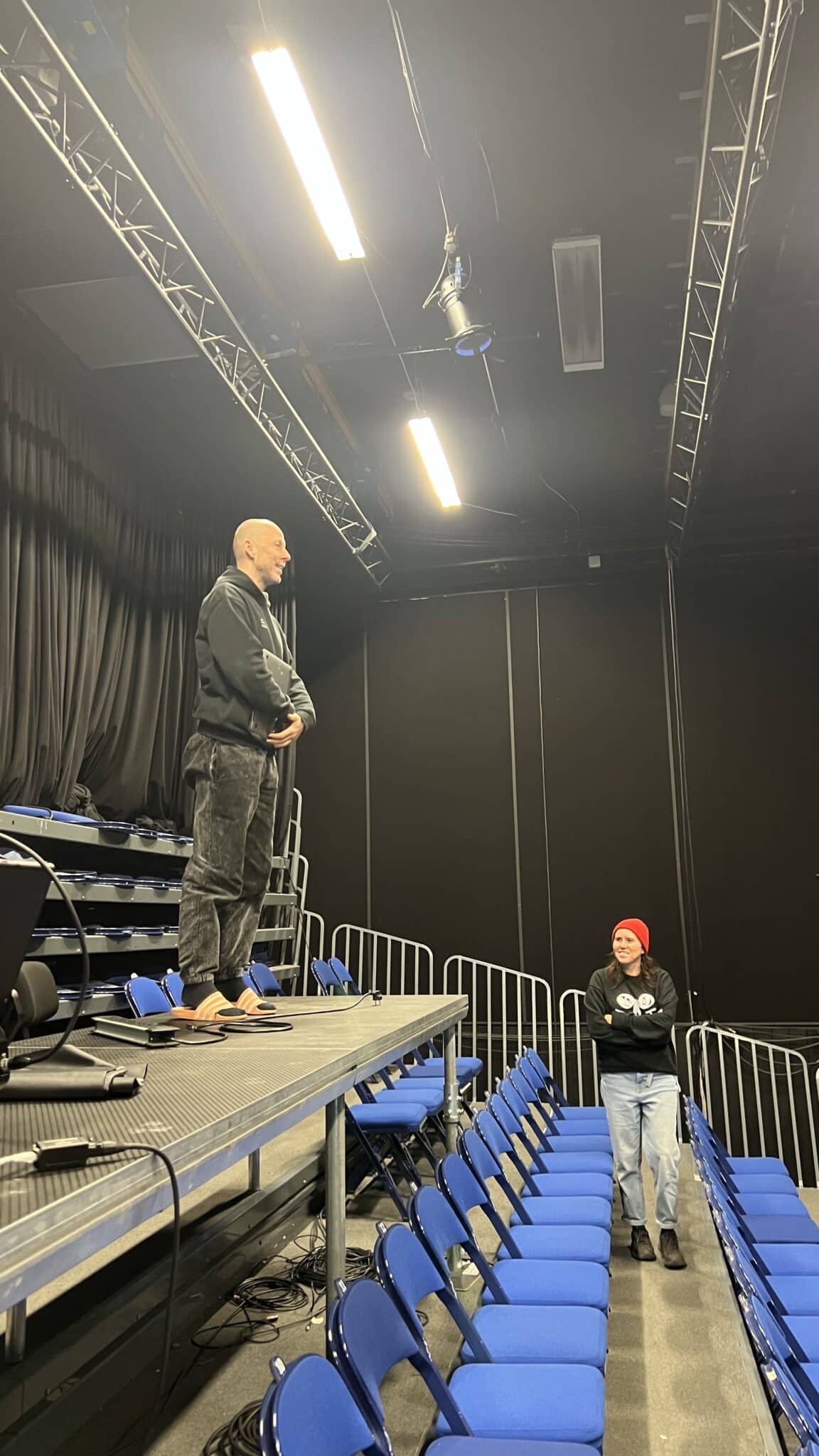
Jan Martens and Elke Verachtert overseeing preparations in Studio Bergen. Photo: Jonas Sharif Hordvik.
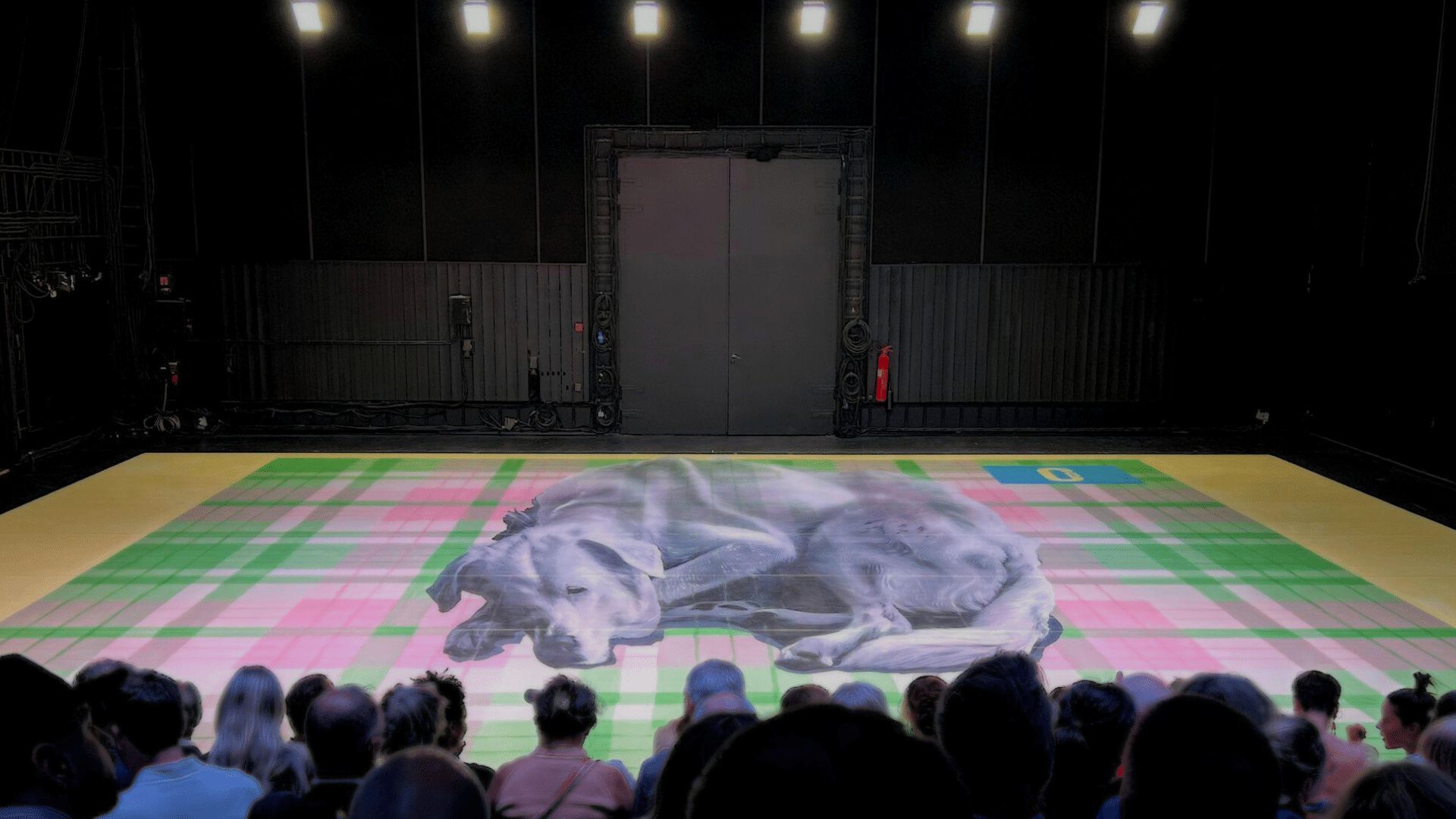
The floor on premiere night in Studio Bergen. Photo: Sunniva Prytz Sandnes